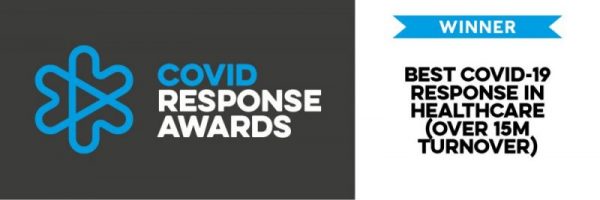In This Section
What is Hip Pain?
Your hip is a strong, ball-and-socket joint connecting the long bone of your thigh to your pelvis. Without its unique design, you wouldn’t be able to twist and bend, cross your legs, or curl up in an easy chair.
Like all your joints, the hip receives its fair share of use and abuse, so it isn’t any wonder that things go wrong. Even though athletes commonly complain of hip pain, you don’t have to be a gymnast, dancer, or even a runner to feel an occasional ache.
Some of the more common causes of hip pain are:
- Osteoarthritis
- Trochanteric bursitis
- Clicking/snapping hip
- Labral tear
What is Osteoarthritis?
The bone surfaces within a joint are covered with smooth cartilage that allows the bones to move smoothly over each other. A joint also contains a small amount of fluid (synovial fluid) that helps lubricate the joint (like oil in an engine).
Osteoarthritis is the most common form of arthritis affecting 8.5 million people in the UK. It develops gradually over time, causing joints to become stiff and painful. It can affect any joint but commonly affects the hands, knees, hips, feet and spine. In joints with osteoarthritis, the joint cartilage becomes damaged and worn. The bone tissue next to the cartilage can also be affected and bony growths can develop around the joint edges. These growths are called osteophytes and may be seen on X-rays. The joints and the tissues around the joints can also become inflamed. This inflammation is called synovitis.
Factors that may play a role in the development of osteoarthritis include:
- Age
Osteoarthritis becomes more common with increasing age. It may be that the state of the blood supply to the joint and the state of the natural mechanisms of repair become less efficient in some people as they become older.
- Genetics
There may be some inherited tendency for osteoarthritis to develop in some people.
- Obesity
Knee and hip osteoarthritis are more likely to develop, or be more severe, in obese people. This is because there is an increased load on the joints and a potential for more joint damage.
- Your sex
Women are more likely to develop osteoarthritis than men. Previous joint injury, damage or deformity. For example, this may include previous joint infection, a previous fracture (break in the bone) around a joint, or congenital hip problems such as dislocation
Do I need any tests?
An X-ray is commonly done to confirm the presence of osteoarthritis in the hip and assess its severity. In some circumstances your GP may arrange blood tests to exclude other forms of arthritis.
How Can I prevent osteoarthritis of the hip?
Whilst we cannot control factors such as ageing, our family genetics and congenital problems or injuries which occur through accidents, a healthy active lifestyle will help minimize the chances of developing osteoarthritis. Keeping active will maintain strong muscles around the joint to support and stabilize the joint and will help maintain joint mobility. Avoiding being overweight will also reduce strain and wear on your joints including your hips.
General measures to help treat osteoarthritis
- Exercise
If possible, exercise regularly. As stated above this helps to strengthen the muscles around affected joints, to keep you fit, and to maintain a good range joint movement. Swimming is ideal as it is not weight bearing but any exercise is better than none. Many people can manage a regular walk.
- Weight control
If you are overweight, try to lose some weight. Even a modest weight loss can make quite a difference.
- Shoe insoles
- Walking aids
If you have osteoarthritis of your hip or knee, when walking, try using a cane (walking stick). Hold it in the hand on the opposite side of the body to the affected joint. This takes some pressure off the affected joint and helps to ease symptoms in some cases.
- Physiotherapy
Sometimes advice or treatment from a physiotherapist can be helpful
- Paracetamol
Paracetamol is the common medicine used to treat OA. It often works well to ease pain. It is best to take it regularly to keep pain away, rather than now and again when pain flares up. A normal adult dose is two 500 mg tablets, four times a day. It usually has little in the way of side-effects, and you can take paracetamol long-term without it losing its effect.
- Co-codamol
Co-codamol is a combination of paracetamol 500mg and varying amounts of another painkiller, codeine. This makes it stronger than paracetamol alone but the codeine can cause side effects such as drowsiness or constipation
- Anti-inflammatory painkillers
Anti-inflammatory painkillers, of which there are a number of different brands, can be very effective and can be used in conjunction with paracetamol or co-codamol. Unfortunately they do have side-effects such as gastrointestinal upset and irritation and kidney damage and so should be avoided by some people (if in doubt check with your pharmacist or GP)
- Other therapies
Some people have found that transcutaneous electrical nerve stimulator (TENS) machines help to ease pain from osteoarthritis. Acupuncture may also help to ease symptoms in some cases.
- Surgery for osteoarthritis
Most people with osteoarthritis do not have it badly enough to need surgery. However, osteoarthritis of a joint may become severe in some cases. Some joints can be replaced with artificial joints of which there are numerous kinds. Hip replacement surgery has become a standard treatment for severe osteoarthritis. However, like any operation, joint replacement surgery is not without risk.
Vita is an award-winning, CQC registered healthcare provider














